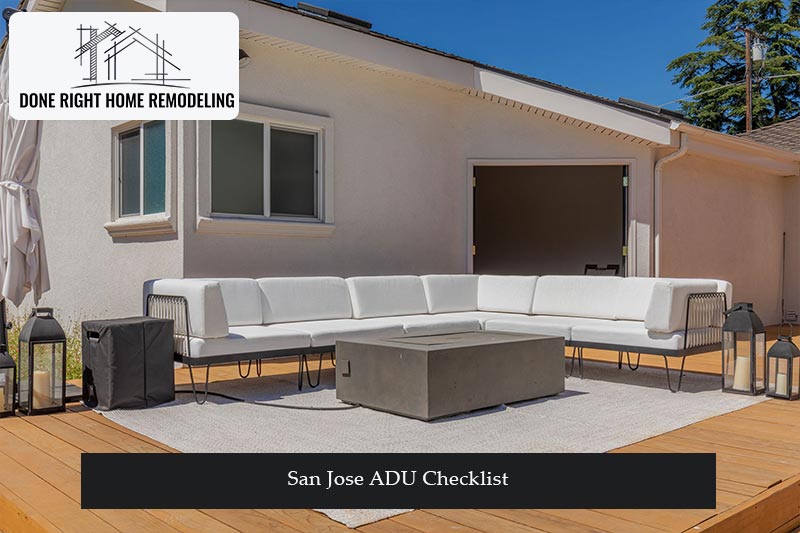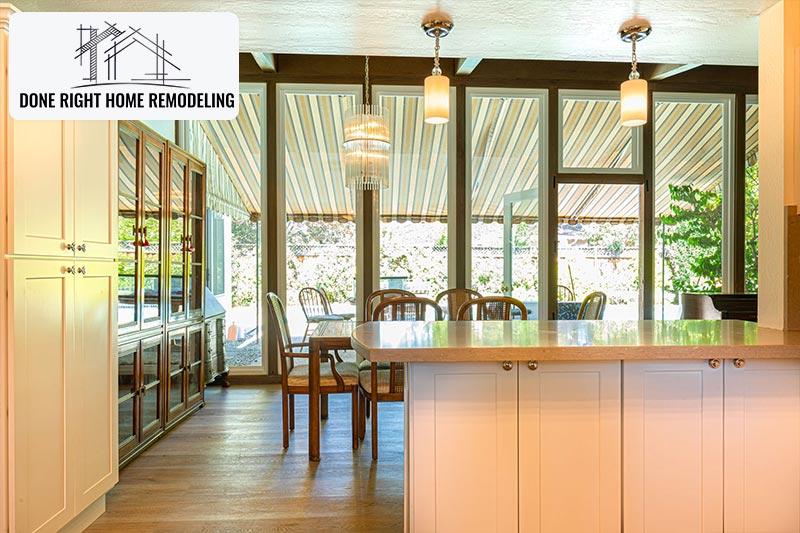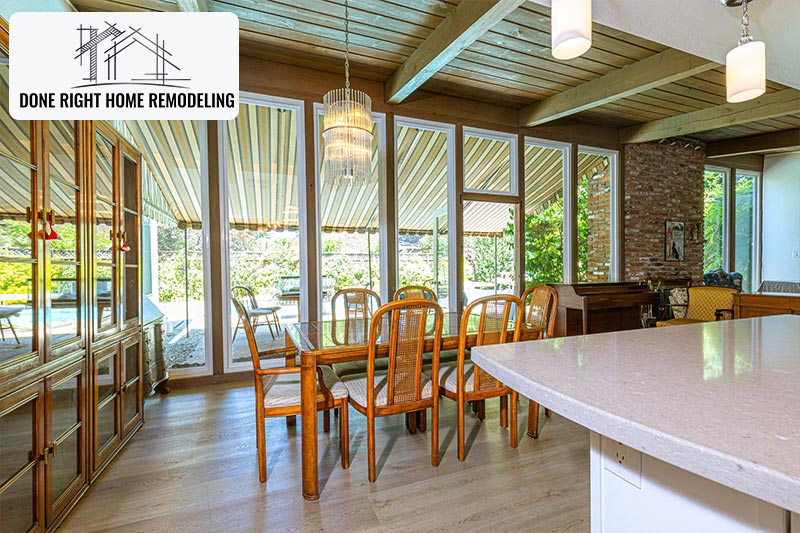LIC #: 1002689
If you’re considering building an ADU in San Jose, there are a few things you need to know first. We’ll go over the San Jose ADU checklist to let you know before starting construction on your ADU. So if you’re thinking about building an ADU in San Jose, read on for more information!

The City Council regulations insist on the need to allocate one off-street parking space after you have constructed an accessory dwelling unit. However, there are leeways to this rule, and in some special circumstances; you are spared from having to allocate a parking zone.
|
Close to a public transit system |
Is your property located within half a mile of a public transit system? In these circumstances, you are spared from having to allocate additional space for parking after ADU construction work. |
|
Conversion work |
The regulations spare you from allocating space for parking if you have done conversion work. |
|
Historical district |
Do you live in a district of historical importance? Once again you are spared from having to allocate some space for parking. |
One of the first things on your San Jose ADU checklist is the Is your ADU within the required measurements? For the single-family property, on a compound size measuring less than 9k square feet, you can put a detached ADU of up to 1k square feet, considering the rear yard coverage rule.
If you have a compound measuring 9k square feet, you can construct an 800 square feet attached ADU or up to half of the primary resident area.
For the compound size exceeding 9k, you can set an attached ADU of up to 800 square feet or a detached ADU of up to 1,200 square feet.
Additionally, if a JADU is proposed, it can be up to 500 square feet, an attached ADU up to 800 square feet but should be at most half of the primary dwelling area and 800 square feet of detached ADU.
For single-family dwellings, an attached Accessory Dwelling Unit (ADU) can be no taller than the primary dwelling unit on the property.
If detached, an ADU can be a maximum of 18 feet for one storey or 24 feet for 2 storeys. If there is already a junior accessory dwelling unit (JADU) on the property, the height of the detached ADU must be at most 16 feet.
For duplexes and multifamily properties, attached ADUs must maintain the height of any existing converted space. Detached ADUs are only a maximum of 16 feet high for one storey; two-storey detached ADUs are not allowed.
These height restrictions help to ensure that ADUs do not tower over surrounding structures and adhere to local building codes.
Did you include San Jose zoning laws in your San Jose ADU checklist? Before you even consider starting the construction of a San Jose ADU, you need to obtain a San Jose Zoning permit.
With this permit, you can move forward with your plans. The permit process includes a review of the proposed design to ensure it meets the requirements of the San Jose Municipal Code.
San Jose ADU regulations require the creation of accessory dwelling units, including zoning, minimum lot size, maximum unit size, and parking requirements. Once you have obtained your San Jose Zoning permit, you can move on to the next step in the construction process.

The CFC requires that all living spaces, hallways, and on each level of the property, and within 30 feet outside bedroom entrances be equipped with working fire alarms.
Keep a point to install smoke detectors in these areas because they must have enough space for emergency responders’ access when needed; thus, you must check if your ADU meets this requirement beforehand!
Additionally, make sure addresses such as “Main Home” or “Attention sir/mam” (depending upon who lives there) stand out so everyone can spot them from afar – especially during times when things may happen quickly.
San Jose requires an additional hookup for utilities such as water, sewer, and electricity to accommodate new ADUs. The utility companies will need access to the site upon request from residents to evaluate their current infrastructure before providing estimates on how much it would cost per month or year-long contract based on these readings to ensure there are no issues with billing beforehand!
In addition, San Jose ADU rules may vary depending on which San Jose municipality your property is located in, so it’s important to check with your city or county before you begin your project.
Some things to keep in mind when evaluating San Jose ADU financing options include the time frame of your project, the amount of money you’ll need to finance your project, and the interest rates and terms of the different financing options. You’ll also want to consider whether you’re looking for a short-term or long-term solution. Once you’ve evaluated your options, you’ll be able to choose the best financing option for your San Jose ADU project.
San Jose requires a building permit to construct a San Jose ADU. San Jose building permits require specific information such as current zoning, land use, and access points for utilities. Therefore, San Jose building permits must be obtained before the construction of San Jose ADU.
To obtain a permit to build an ADU in San Jose, applicants must first submit a pre-application to the Planning Division. A formal application, including detailed plans and specifications for the proposed unit, follows this. Once the application is complete, city staff will review it to determine whether it meets all of the requirements outlined in the Ordinance.
While going through San Jose ADU checklist, you might realize that the city has a variety of rules and regulations that must be followed when designing and constructing an accessory dwelling unit (ADU). San Jose ADUs must be designed and constructed in compliance with San Jose building codes, San Jose zoning laws, San Jose utility requirements, and San Jose construction standards.

San Jose designers and contractors must thoroughly understand all applicable San Jose ADU rules to ensure compliance. Non-compliance with any of the San Jose ADU rules can result in significant penalties, including but not limited to fines, stop work orders, and delay in project completion.
To avoid potential problems, San Jose designers and contractors must consult with the San Jose Planning Department early in the design process to ensure that all ADU guidelines in San Jose are followed.
So, there you have it! Everything you need to know about building an ADU in San Jose. By following this simple San Jose ADU checklist, you’ll be on your way to having a brand-new (or newly renovated) backyard cottage that will add value and convenience to your life.
Do you have any questions we didn’t answer in this post and would like to build one for you? If so, please get in touch with Done Right Home Remodeling, and we’ll get back to you as soon as possible.
Here are some criteria your property needs to meet before you can build an ADU.
It must be located within San Jose city limits
Properties within the zones of R-1, R-2, R-M, or PD are allowed to construct an ADU.
A single-family residence is allowed to construct an ADU and JADU.
A duplex or a multi-family property can construct two detached ADUs.
This regulation will only apply if you are constructing a JADU.
Yes, the regulations permit you to construct a new home and an accessory dwelling unit at the same time.